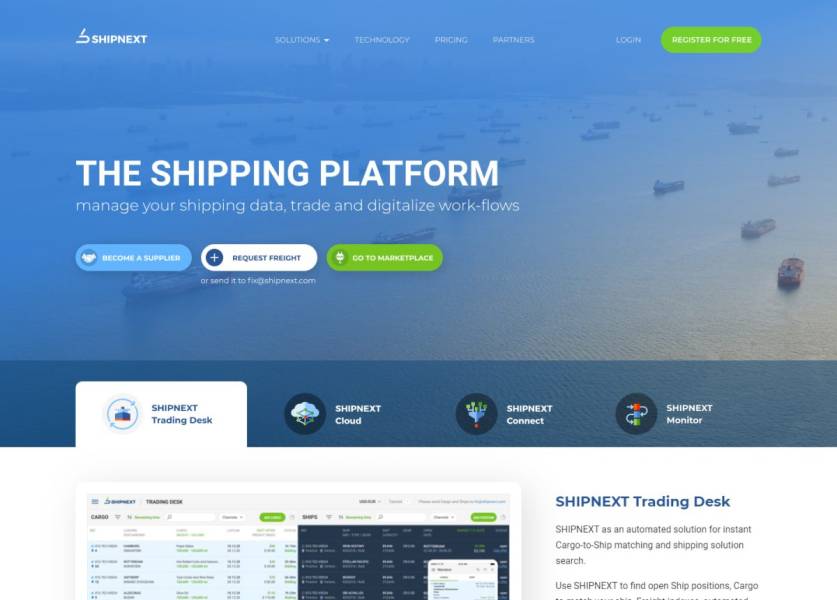The maritime logistics industry is evolving rapidly, embracing digital transformation at nearly every level. From smart shipping containers to fully automated ports, innovation is improving efficiency — but also exposing new vulnerabilities. As technologies like supply chain automation become more widespread, so does the potential for cyberattacks that can cripple operations, leak sensitive data, or even threaten physical safety..

Digital Expansion Comes with New Risks
Maritime logistics is no longer just about moving cargo from point A to point B. Today, vessels and port infrastructure rely heavily on interconnected systems — satellite communication, onboard sensors, cargo tracking platforms, and enterprise software. While this connectivity drives productivity, it also opens up countless doors for hackers.
Many shipping companies still rely on outdated systems patched together over decades. Combined with poor cybersecurity hygiene and a lack of skilled personnel, these factors create an ideal environment for cybercriminals. Ransomware, data breaches, and targeted attacks are no longer rare — they’re happening now, and their frequency is only rising.
Key Targets in the Maritime Digital Ecosystem
Understanding what cybercriminals are after helps illuminate the scope of the problem. They aren’t always looking for money directly — though ransom demands are common — but also for operational disruption, intellectual property, and sensitive trade data.
Ships themselves are tempting targets. Navigation systems, engine controls, and even ballast water management can all be manipulated if compromised. On land, automated port cranes, inventory systems, and scheduling software hold equally critical data and controls.
The goal for attackers may vary, but the impact on global trade is always significant. When a single port grinds to a halt due to a system failure or breach, it creates a domino effect across the entire supply chain.
Why Maritime Is Especially Vulnerable
The maritime industry has traditionally lagged behind in digital security. Some of the reasons are structural — long ship lifespans mean systems onboard may be decades old. Updating them is costly and logistically difficult. At sea, internet access is often limited, delaying patching and monitoring.
There’s also a persistent disconnect between IT and OT (Operational Technology) teams. While IT might manage email servers and business software, OT handles the systems that control physical hardware. These two layers must work together for effective cybersecurity — and too often, they don’t.
Finally, international shipping involves numerous jurisdictions and regulations, creating a fragmented landscape. A vessel registered in one country may be operated by a company in another, staffed by a crew from a third, and docked in a fourth. This complexity complicates enforcement and standardization.
Common Threat Vectors and Attack Methods
Cybercriminals targeting maritime logistics use a variety of attack methods, often exploiting human error or outdated software. Below are some of the most common:
- Phishing emails and social engineering. Attackers trick personnel into clicking malicious links or revealing credentials.
- Malware introduced via USB devices or external hardware. Many ship systems are still updated manually.
- Unsecured satellite communications. SATCOM channels often lack encryption or proper authentication.
- Ransomware attacks on shipping companies. These can shut down operations for days or even weeks.
- Supply chain attacks. Compromising a vendor or contractor to access the main target.
Each of these methods has caused real-world damage, and all of them remain active threats in the current digital landscape.
Strategic Approaches to Strengthening Cybersecurity
Improving cybersecurity in maritime logistics isn’t a matter of plugging in a firewall and calling it a day. It requires a layered and adaptive strategy — one that considers people, processes, and technology.
First, organizations need to prioritize awareness and training. Crew members and port workers must be taught how to recognize suspicious activity and what steps to take during a potential breach. Investing in cyber drills — much like fire or emergency drills — prepares teams for real-world scenarios.
Second, robust access management is key. Limiting who can interact with critical systems and keeping track of login attempts can prevent a minor mistake from becoming a major disaster. Segmenting networks, especially between IT and OT systems, adds another layer of defense.
Third, regular audits and vulnerability assessments help identify weak points before attackers do. These should be conducted by external experts where possible, bringing in fresh eyes and current threat intelligence.
The Role of International Cooperation and Regulation
No single company or nation can tackle maritime cybersecurity alone. The sea connects us all, and so do the threats. As cyberattacks become increasingly sophisticated and international in scope, collaboration becomes essential.
Organizations like the IMO (International Maritime Organization) are beginning to enforce cybersecurity requirements, such as incorporating cyber risk management into the ISM Code. But progress remains uneven. More widespread adoption of shared security frameworks and real-time threat sharing is needed.
At the same time, shipping companies must pressure software vendors to prioritize security in design. Too many marine systems still treat cybersecurity as an afterthought, rather than a core requirement.
Looking Ahead: Building Resilience in a Connected World
Maritime logistics will only become more digitized in the coming years. As artificial intelligence, IoT, and autonomous systems gain traction, the stakes will rise even higher. That’s why it’s essential to build a resilient foundation today — one that can adapt to future threats without stalling global trade.
Cybersecurity isn’t a one-time fix — it’s an ongoing commitment. By understanding the risks, investing in protection, and working together across borders, the maritime industry can navigate these waters safely and securely.
In a world that depends on seamless trade and interconnected networks, protecting the digital infrastructure of our oceans is not just good practice — it’s a necessity.
HedgeThink.com is the fund industry’s leading news, research and analysis source for individual and institutional accredited investors and professionals








